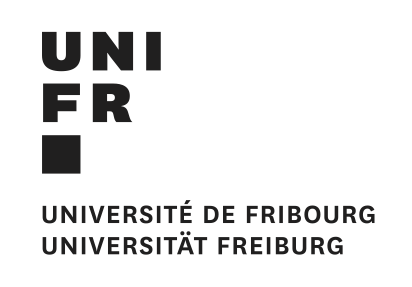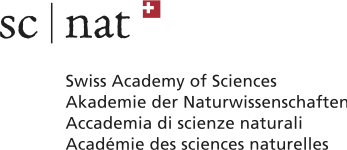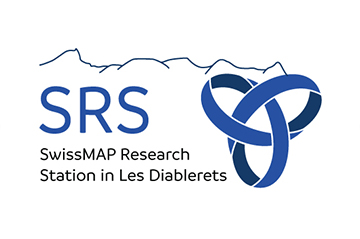Program and schedule
The arrival day is Sunday, July 16. Dinner will be served in the Hôtel les Sources at about 7 p.m.
The scientific program begins on Monday morning, July 17, and ends on Friday, July 21, after lunchtime.
Wednesday will be John's Day.
You can download very soon the schedule, titles and abstracts as a PDF here.
Schedule
| Monday | Tuesday | Wednesday | Thursday | Friday | |
|---|---|---|---|---|---|
| 09:00-09:15 | Opening | ||||
| 09:15 - 10:15 | Allcock I | Stover II | Pasquinelli | Paupert | Falbel |
| coffee break | |||||
| 10:45 - 11:45 | Stover I | Allcock II | Deraux | Will | Parker |
| 12:15 - LUNCH | |||||
| 15:30 - coffee & cake | |||||
| 16:15 - 17:15 | Reid | Emery | Raimbault | ||
| refreshments | free afternoon | ||||
| 17:45 - 18:45 | Kellerhals | Thilmany | Tumarkin | ||
| 19:00 - DINNER | 19:00 Aperitif Dinner |
18:15 Aperitif Conference Dinner |
Raclette | ||
Talks
Daniel Allcock
Hyperbolic geometry and the Leech lattice These will be expository talks about a discovery made by J. H. Conway around 1980, and later developments. It is simple and beautiful and explains many things. Namely: the existence of the Leech lattice, and some of its basic properties, implies the existence of a remarkable Coxeter group in hyperbolic 25-space. The details of this 24-dimensional Euclidean lattice won't matter very much for us. The Coxeter polytope is defined in terms of it in a simple way; while it has infinite volume, it is akin to a horoball, and its volume is "just barely" infinite. The existence of this polytope explains Niemeier's classification of the 24 even unimodular lattices of rank 24. It explains the fundamental domains for Vinberg's Coxeter groups in hyperbolic n-space (n<20), coming from ℤn,1, including the strange fact that their diagrams get more and more symmetric as n grows. It allowed the speaker to construct infinitely many finite-volume Coxeter polytopes in each of these dimensions. It allowed Borcherds to find the highest-dimensional (so far) finite-volume hyperbolic Coxeter groups, in ℍ21. And it makes all of these Coxeter polytopes comprehensible, for example it's a pen-and-paper exercise to find their cusps. There are applications to algebraic geometry and Kac-Moody algebras, and interesting generalizations to complex- and quaternionic-hyperbolic geometry, which alas I probably won't have time to say anything about.
Martin Deraux
A smooth complex hyperbolic surface with a single end Non-cocompact complex hyperbolic surfaces of finite volume have finitely many ends. I will briefly review the description of their ends in terms of the Heisenberg group, and explain how to construct an infinite tower of finite volume complex hyperbolic surfaces that are smooth, have a smooth toroidal compactification, and such that each of these surfaces has a single end.
Vincent Emery
Quaternionic hyperbolic lattices I will report on (not so) recent results about volumes of quaternionic hyperbolic quotients. Joint work with Inkang Kim.
Elisha Falbel
CR structures and path structures CR structures and path structures are geometric structures which appear on a three manifold equipped with a contact structure. CR structures appear naturally as boundaries of complex manifolds. On the other hand path structures are related to second order differential equations. I will explain several analogies between these two seemingly different structures.
Ruth Kellerhals
Small volume cusped hyperbolic manifolds constructed from Coxeter groups Using the symmetric group Sn+1 and related Coxeter groups [3,3,...,3,6] we construct cusped hyperbolic n-manifolds of small volume having small rank fundamental groups for n≤5. In particular, we find a cusped orientable arithmetic hyperbolic 5-manifold of volume 13ζ(3)/2 starting from the ideal birectified 5-simplex. This is joint work with Marston Conder.
John Parker
Complex hyperbolic lattices and Euclidean triangle groups As is well known, the group generated by reflections in the sides of a triangle is a lattice when the pairwise products are rotations by integer submultiples of 2π. We can generalise this to groups generated by three complex reflections of order (possibly) greater than 2. In this case the condition on the product is replaced with a (generalised) braid relation. In a famous paper in 1980, Mostow constructed a family of lattices generated by three complex reflections with braid lengths (3,3,3). Since the braiding lengths are odd then the orders of the reflections are necessarily the same. In this talk I will consider lattices generated by three complex reflections with braid lengths (2,4,4) and allow the reflections to have different orders. Surprisingly, this construction yields (some of) Mostow’s lattices along with others constructed by Deligne-Mostow and Deraux-Parker-Paupert.
Irene Pasquinelli
Complex hyperbolic lattices Complex hyperbolic space is the still mysterious sibling of real hyperbolic space. In particular, it is the only symmetric space of non-compact type where the relation between arithmeticity and lattices is not completely understood. In my talk, I will first introduce complex hyperbolic space and the group PU(n,1) of its holomorphic isometries. Then I will talk about lattices in PU(n,1) with a particular focus on the non-arithmetic case. I will give an overview of the known constructions and I will talk about some future directions of research, which we hope will lead to new constructions of non-arithmetic lattices.
Julien Paupert
Higher complex hyperbolic representations of the modular group The modular group Γ=PSL(2,ℤ) is the prototype of a (non-cocompact) lattice in the Lie group PSL(2,ℝ) (equivalently, PO(2,1) or PU(1,1)). Complex hyperbolic deformations of Γ, that is, deformations of Γ into PU(2,1) under the corresponding embeddings, were studied among others by Falbel-Koseleff, Gusevskii-Parker and Falbel-Parker, who in particular classified all discrete, faithful, parabolic-preserving representations. We consider analogous representations of Γ into PU(n,1) for n at least 3. We classify the connected components of the character variety and determine which of these contain (characters of) irreducible parabolic-preserving representations. In dimension n=3 we give an explicit parametrization of all such representations using geometric coordinates, and in particular identify the previous families of discrete, faithful, parabolic-preserving representations in this parametrization. This is joint work with Pierre Will.
Jean Raimbault
Limits of Coxeter polytopes In this talk I will present results about the limits in Chabauty topology of sequences of Coxeter polytopes in hyperbolic space, and their applications to the finiteness problem for arithmetic reflexive lattices and to invariant random subgroups of hyperbolic groups.
Alan Reid
The geometry and topology of certain small volume cusped
hyperbolic 4-manifolds It is known that in dimension 3, the smallest volume cusped orientable hyperbolic manifolds contain immersed but not embedded closed orientable totally geodesic surfaces. This talk will discuss higher dimensional versions of this, as well considering questions related to the geometry of the complements of certain 2-tori in 𝕊4 (that provide interesting examples of cusped hyperbolic 4-manifolds).
Matthew Stover
Arithmeticity, superrigidity, and geodesic submanifolds This minicourse will be dedicated to an overview of my work with Bader, Fisher, and Miller on arithmeticity of real and complex hyperbolic manifolds with infinitely many (maximal, properly immersed) totally geodesic submanifolds of dimension at least two. In honor of John Parker's birthday and for concreteness, I will focus on the case PU(2,1), which exhibits nearly all the interesting pathologies encountered in the proof.
Lecture 1. Superrigidity implies arithmeticity.
I will explain the Margulis method for deducing arithmeticity from superrigidity, explain why something weaker than full superrigidity can be used to prove arithmeticity of a given fundamental group, and give some technical reductions in the case PU(2,1) that refine the usual arithmeticity criterion.
Lecture 2. Proving superrigidity. How does one prove a superrigidity theorem? I will give an overview of one take on the Margulis method elegantly packaged by Bader and Furman, then explain how this can be used to prove superrigidity of certain representations of (say) complex hyperbolic lattices, in particular those representations relevant for proving arithmeticity of a complex hyperbolic 2-manifold with infinitely many properly immersed totally geodesic submanifolds of real dimension at least two.
François Thilmany
Lattices of minimal covolume in SLn(ℝ). A classical result of Siegel asserts that the (2,3,7)-triangle group attains the smallest covolume among lattices of SL2(ℝ). In general, given a semisimple Lie group G over some local field F, one may ask which lattices in G attain the smallest covolume. A complete answer to this question seems out of reach at the moment; nevertheless, many steps have been made in the last decades. Inspired by Siegel's result, Lubotzky determined that a lattice of minimal covolume in SL2(F) with F=𝔽q((t)) is given by the so-called characteristic p modular group SL2(𝔽q[1/t]). He noted that, in contrast with Siegel’s lattice, the quotient by SL2(𝔽q[1/t]) was not compact, and asked what the typical situation should be: « for a semisimple Lie group over a local field, is a lattice of minimal covolume a cocompact or nonuniform lattice? ». In the talk, we will review the basic notions at hand, some of the known results, and then discuss the case of SLn(ℝ) for n > 2. It turns out that, up to automorphism, the unique lattice of minimal covolume in SLn(ℝ) (n > 2) is SLn(ℤ). In particular, it is not uniform, giving a partial answer to Lubotzky’s question in this case.
Pavel Tumarkin
Farey graph and ideal tetrahedra We explore a 3-dimensional counterpart of the Farey tessellation and show that it inherits many properties of the usual 2-dimensional Farey graph. In particular, we get a classification of SL2-tilings over Eisenstein integers in terms of pairs of paths on the graph. We also get a 3-dimensional counterpart of the Ptolemy relation. The talk is based on a joint work with Anna Felikson, Oleg Karpenkov and Khrystyna Serhiyenko.
Pierre Will
Slim subsets of 𝕊3 and spherical CR uniformisations Viewing the sphere 𝕊3 as the boundary at infinity of the complex hyperbolic plane, we call slim a subset E of 𝕊3 such that ideal triangles with vertices in E are uniformly far from being contained in a complex line. This property can be quantitatively described using the Cartan invariant. We prove that sufficiently small deformations of real Fuchsian groups have slim limit sets, and discuss geometric properties associated to the slimness property. In particular, we describe certain spherical CR uniformisations of 3-manifolds with complex hyperbolic quasi-Fuchsian holonomy. This is joint work with Antonin Guilloux and Elisha Falbel.




